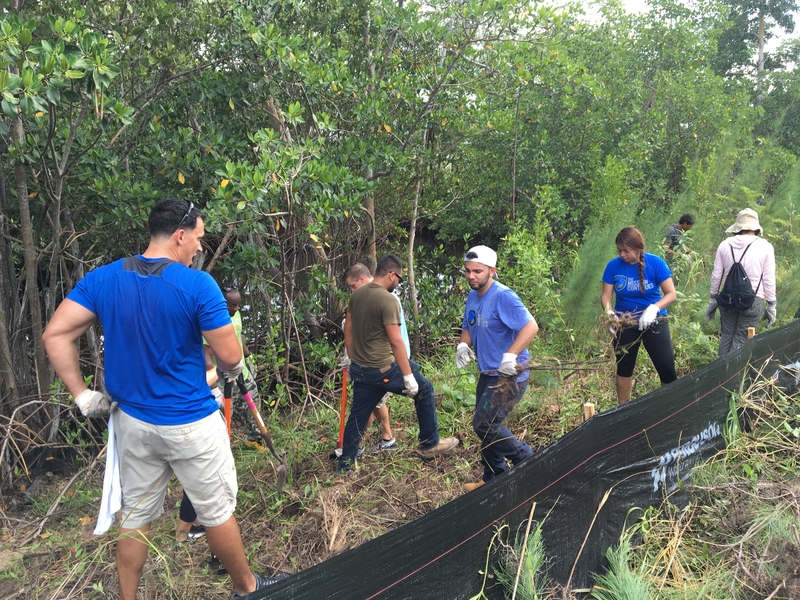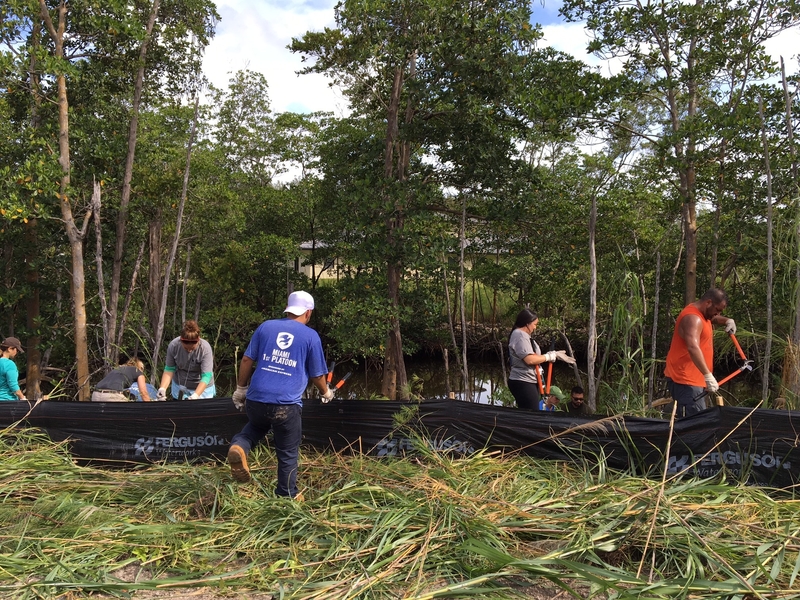
On a recent blustery Saturday morning, over 30 eager volunteers assembled at Florida International University’s Biscayne Bay Campus with a mission. They came to hack away invasive plants at the site of Frost Science’s new Batchelor Environmental Center (BEC). Invasive plants such as Burma reed to Australian pine had encroached on the area over the years, and one of our missions at MUVE (Museum Volunteers for the Environment) is to restore native habitats. The site at BEC provided the perfect opportunity. These plants excel at choking off native vegetation and ensuring that nothing lives in their dark and dreary undergrowth.
Opening in 2017, BEC is Frost Science’s 75,000-square-foot facility that will house our animal-focused operations, including our state-of-the-art raptor rehabilitation program; animal husbandry for hundreds of creatures seen in our exhibits downtown; a 113,000-gallon aquarium system to nurture and quarantine fish before we place them in the downtown exhibits; and the future home of MUVE, our volunteer habitat restoration program.

Volunteers work hard to clear out the invasive plants including Australian Pine and Burma Reed from the restoration site
BEC will also continue the work of the current Batchelor Wildlife Center (located in our Coconut Grove site), which has been rehabilitating injured raptors such as peregrine falcons, Cooper’s hawks and screech owls, either releasing them back into the wild if they are fit to survive, or utilizing them in our education programs.
The purpose of the restoration activity, which is funded by a grant from the National Fish and Wildlife Foundation, is to create a buffer of native mangrove and hardwood forest around the site to attract native wildlife and ensure a more native and resilient area. Additionally, MUVE will establish permanent citizen science data collection with camera traps, water quality testing, tree phenology, and bird monitoring, so as to document the environmental change they are creating over time. Interpretive signage will be installed to guide visitors to the area’s natural history.
The project is part of a broader effort envisioned by MUVE to expand the Oleta River corridor, a riparian buffer area located around Miami-Dade County’s last free flowing river. This six-mile-long corridor provides hope that Miami, one of the densest urban areas in the country, can coexist with nature and reap the benefits that urban wild areas provide, such as higher property values, lower electric bills, less noise, and more encounters with native birds, butterflies and mammals.
The project is part of a broader effort envisioned by MUVE to expand the Oleta River corridor, a riparian buffer area located around Miami-Dade County’s last free flowing river. This six-mile-long corridor provides hope that Miami, one of the densest urban areas in the country, can coexist with nature and reap the benefits that urban wild areas provide, such as higher property values, lower electric bills, less noise, and more encounters with native birds, butterflies and mammals.
The volunteers represented a broad portfolio of local groups, including Mission Continues, which engages recent Iraq and Afghanistan war veterans to give back to their community; FIU’s School of Environment, Arts and Society; Wells Fargo, which has funded MUVE and provided volunteer support; and the museum’s Upward Bound Math and Science program. Specifically, 13 UBMS students helped remove invasive plants. The invasive plant removal process will continue until Spring, when MUVE will begin planting native mangrove and hardwood trees.
